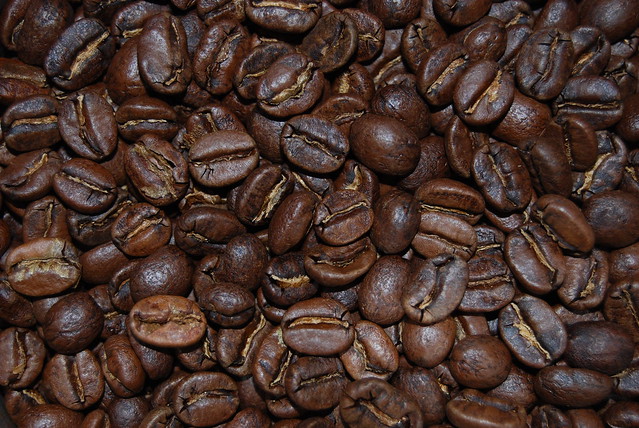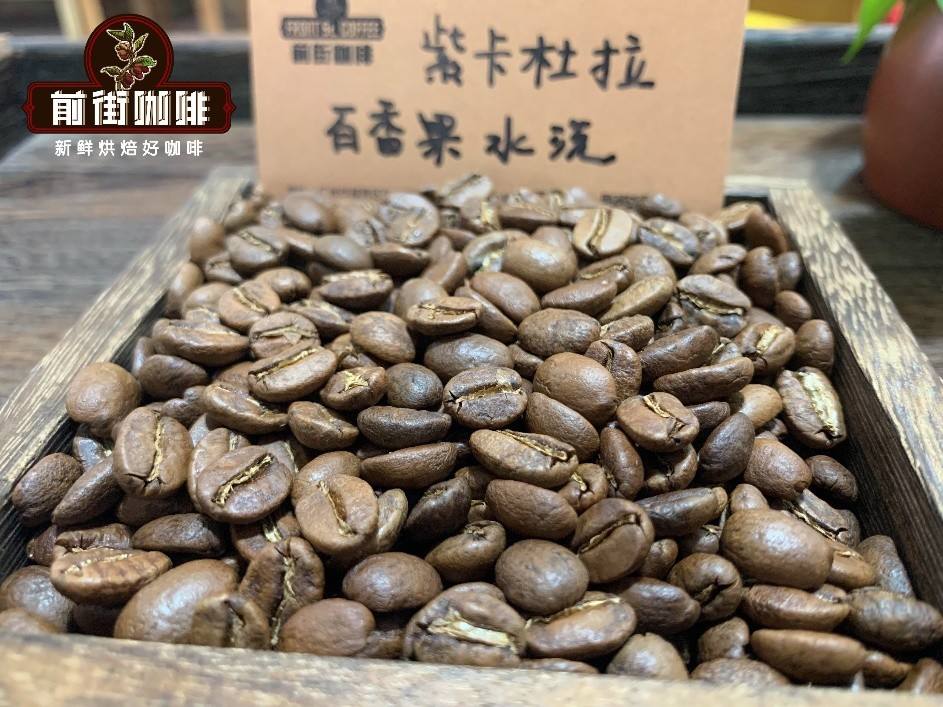Colombian coffee beans are sour? Why is the coffee sour? how to deal with the acid in the coffee beans?
Do you know? 2000-8000 taste buds? These small sensory cells are responsible for taste perception. Generally speaking, taste belongs to one of the five flavors:
Sweet
salty
Sour
Bitter
Fresh taste
Sour taste and flavor usually come from the back edge of our tongue. But it is worth paying attention not to confuse acidity with sour taste
Now, it is important to note that coffee naturally contains acidity. Also, the acidity in coffee is a good thing! But it is often confused with sour taste.

Pleasant acidity is the difference between dull, soft coffee and bright, refreshing, vibrant coffee.
In fact, sour taste is a typical flavor feature of Colombian coffee:
Colombian coffee stands out because they have a large number of varieties from different growing areas. This variety produces a wide range of flavors, and it is difficult to remember a set of Colombian flavors. Colombia is also one of the few countries that grow only Arabica coffee beans. That's why their coffee is usually sweeter, more sour and of higher quality than robusta coffee. Some coffees have a stronger chocolate flavor, while others are bright and sweet and fruity. Coffee is smooth and medium-bodied, and its mild flavor makes it an excellent choice for espresso.
Coffee beans produce a lively fermented flavor with medium to high acidity, usually with fruity, citrus, and sometimes spicy aromas. Colombian beans are unique in that they do not become too bitter when they are deep-roasted. So you can see that there are a large number of cafes that choose to use Colombian coffee beans.
On the front street is a coffee bean from Montblanc Manor, Columbia, which is anaerobically washed by Zicadura passion fruit yeast. The flavor of this coffee bean is the division and tonality of tropical fruits such as passion fruit grapes.

Think of acidity as the carbonation of soda. Without the rich taste of carbonation, the soda tastes dull. Without acidity, your coffee won't be as exciting as it should be!
There are four main acids in coffee:
Citric acid-lemon, lime, orange, citrus flavor
Malic acid-green apple flavor
Phosphoric acid-sweet, rich taste
Acetic acid-similar to the taste of sour beer or vinegar.
Coffee from all over the world contains varying degrees of acid, which helps to form the overall flavor of the cup. For example, beans from Brazil usually contain less acidity, resulting in smooth, nutty and sweet coffee. Coffee beans from East African countries such as Zambia or Ethiopia contain higher levels of acid and can be used to make fruity or "spicy" coffee.
Like everything in life, too many good things can be bad things. The sour coffee tastes sour and astringent. This happens when coffee is overroasted or incorrectly brewed. This is why the goal of professional coffee professionals is to bake and brew sour coffee, highlighting and praising the natural flavor of coffee beans.
Three reasons why coffee turns sour
1. Extracting
When you make coffee, the acid, sugar, oil and other flavor substances in the coffee beans dissolve and mix with water to make your final brewing drink.
This process is called "extraction". Also known as coffee brewing.
The first thing to extract is acid. So when you start brewing, your coffee is very sour. If all these natural acids are not offset by sugar, oil and other flavors, they will be very strong (too bright and sour).
We call it "insufficient extraction" because the coffee is not brewed enough to produce and dissolve all the delicious flavors in the beans to create a balanced cup of coffee.
Insufficient extraction is a very common problem, but it is not complicated to solve it. We'll show you how in a minute.
two。 Under the baked beans
Coffee roasting begins with raw coffee beans. Through the perfect balance of heat, air, rotation and other factors, the baker converts the raw beans into coffee that we are familiar with and love.
During the baking process, Maillard reaction occurs. Maillard reaction is responsible for the browning of food. When you:
Turn bread into toast
Deep-fry the soft bacon into a crispy delicacy
Roasted coffee beans
In coffee, Maillard reaction converts the original organic compounds in raw coffee into delicacy and caramelizes sugars. Without Maillard reaction, the coffee tastes sour and earthy.
This means that if your coffee beans are lightly roasted and do not experience Maillard reaction, they will have a noticeable sour taste and almost hay-like taste. It's gonna be really bad.
If your coffee tastes sour, it may be because the beans are not fully roasted (also known as immature).
Fortunately, this is mainly a challenge to the new coffee roaster, but it is becoming less and less challenging.
3. Old coffee beans
With the passage of time, your coffee beans will slowly decompose. The aromatic oil evaporates. The sugar will break down. A delicious natural acid begins to sour and taste.
Within 3-4 weeks after baking, the taste of your coffee beans will begin to become less balanced. After a few weeks, they start to get very sour. If you taste the pungent taste of lemon and citrus, they are completely out of date. Scoundrel!
Fortunately, it's easy to repair sour coffee at home.
Three simple ways to solve sour coffee
One of the best parts of making coffee at home is the ability to experiment. If you find coffee sour, try one of the following three solutions.
1. Grind more finely
Remember how sour coffee is when it is not extracted? If the particle size of your coffee is too large, there may be insufficient extraction.
Because of their size, it takes longer for the water to fully saturate the larger coffee particles, which means that most flavors are not extracted from coffee beans. On the other hand, fine grinding can extract flavor compounds more quickly than rough grinding.
If you find that your coffee tastes a little sour, please grind finer coffee particles.
two。 Increase the brewing time
If you buy ground coffee instead of whole beans, grinding finer is not an option. Since rough coffee needs more brewing time to extract flavor correctly, the simplest solution is to increase the brewing time.
Sour coffee is usually the result of a short brewing time and does not fully extract sweetness from coffee beans. Increasing the brewing time will enable all delicious flavor compounds to be extracted into your drink.
If you are brewing French media or Philharmonic pressure, this means waiting for a while before you slowly drop to the ground (it may be the easiest way to deal with the sour taste of coffee). Or, if you like to pour water, pour water a little more slowly to increase the total time for coffee grounds to interact with water.
3. Increase the proportion of coffee: water
All coffee formulations are changes in the ratio of coffee to water, such as the traditional 2 tablespoons coffee powder and 8 ounces of water.
Unfortunately, this ancient recipe doesn't work for all coffee-even if it's the right way to extract it. Some mixed coffee or single-source coffee tastes too sour, even with commonly used recipes.
That's why eventually you have to trust your taste buds.
Use coffee with too little water: the proportion of water will lead to thicker brewing. Naturally, this stronger cup of coffee will lead to a stronger sour taste.
Now, think back to our quick course on coffee acidity. The acidity highlights the pleasant taste and sweetness of the coffee.
When your brewing formula causes the coffee to turn sour, please use more water. Adding more water directly increases the brewing time, making the extraction more uniform and producing coffee with softer acidity and sweeter taste.
Important Notice :
前街咖啡 FrontStreet Coffee has moved to new addredd:
FrontStreet Coffee Address: 315,Donghua East Road,GuangZhou
Tel:020 38364473
- Prev

Why are Colombian Rose Valley coffee beans so fragrant? are they fragrant beans? Description of flavor and taste
Rose Valley of Qianjie Coffee has always been a very special coffee bean. It has amazing peach plate features with aromas of cranberries, chocolate and roses. So what kind of growing environment created his unique aroma? The first reason for its taste is that Colombia has grown coffee.
- Next

Colombia Coffee Logo Source Colombia Coffee Growers Producers Association NFC Story Logo Xu
To fully understand the origin of the Colombia coffee logo, let's first take a look at the background information of the Colombia coffee industry. Coffee is one of Colombia's main industries. It is the second largest coffee producer in the world with approximately 560,000 employees working in the coffee industry. Colombia coffee is exported to many countries in Europe as well as Japan and the United States. Colombia coffee growers
Related
- Detailed explanation of Jadeite planting Land in Panamanian Jadeite Manor introduction to the grading system of Jadeite competitive bidding, Red bid, Green bid and Rose Summer
- Story of Coffee planting in Brenka region of Costa Rica Stonehenge Manor anaerobic heavy honey treatment of flavor mouth
- What's on the barrel of Blue Mountain Coffee beans?
- Can American coffee also pull flowers? How to use hot American style to pull out a good-looking pattern?
- Can you make a cold extract with coffee beans? What is the right proportion for cold-extracted coffee formula?
- Indonesian PWN Gold Mandrine Coffee Origin Features Flavor How to Chong? Mandolin coffee is American.
- A brief introduction to the flavor characteristics of Brazilian yellow bourbon coffee beans
- What is the effect of different water quality on the flavor of cold-extracted coffee? What kind of water is best for brewing coffee?
- Why do you think of Rose Summer whenever you mention Panamanian coffee?
- Introduction to the characteristics of authentic blue mountain coffee bean producing areas? What is the CIB Coffee Authority in Jamaica?

